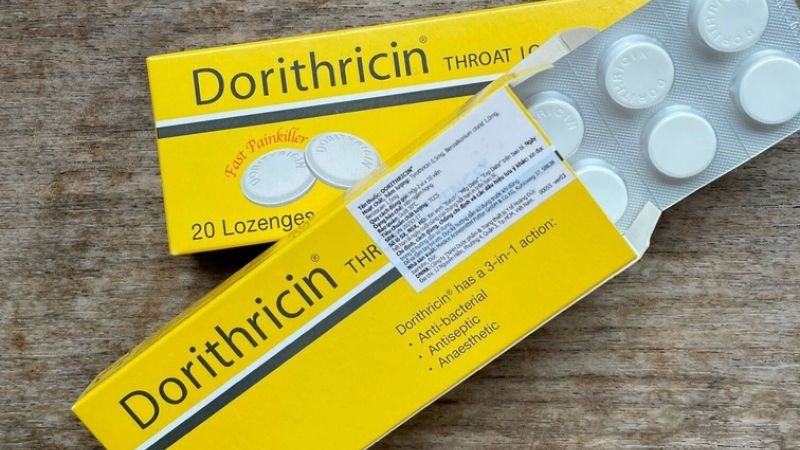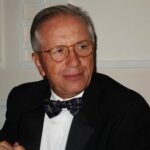Cách trị ho tại nhà an toàn hiệu quả nhất với liệu pháp thiên nhiên

Có khá nhiều cách trị ho tại nhà hiệu quả, an toàn, giúp giảm nhanh các triệu chứng và làm dịu cơn đau rát họng mà bạn có thể thử. Ho là phản xạ tự nhiên của cơ thể để loại bỏ các chất kích thích từ đường hô hấp. Tuy nhiên, ho kéo dài có thể gây khó chịu và ảnh hưởng đến chất lượng cuộc sống.
Cách trị ho tại nhà với các phương pháp tự nhiên
Ho là triệu chứng phổ biến của nhiều vấn đề sức khỏe như dị ứng, nhiễm trùng và trào ngược axit. Dù ho thường là cơ chế tự nhiên giúp làm sạch đường thở nhưng có thể gây khó chịu và đau rát nếu kéo dài thành viêm. May mắn thay, một số phương pháp tự nhiên có thể giúp làm dịu và giảm bớt triệu chứng ho.
Bạn đang xem: Cách trị ho tại nhà an toàn hiệu quả nhất với liệu pháp thiên nhiên
Cách giảm ho với mật ong
Mật ong được coi là một trong những cách trị ho tại nhà phổ biến nhất. Mật ong có đặc tính kháng khuẩn và làm dịu cổ họng, giúp giảm ho nhanh chóng. Mật ong đã được nghiên cứu và chứng minh có khả năng giảm ho hiệu quả, đặc biệt là trong các trường hợp nhiễm trùng đường hô hấp.

Nhiều nghiên cứu cho thấy, mật ong không chỉ giúp giảm tần suất và mức độ của ho mà còn có thể ngăn ngừa việc sử dụng kháng sinh không cần thiết. Bạn có thể dùng một muỗng mật ong trực tiếp hoặc pha với trà thảo mộc nóng để tăng hiệu quả.
- Pha một thìa mật ong với một cốc nước ấm hoặc trà thảo mộc.
- Uống hỗn hợp này 2-3 lần mỗi ngày để đạt hiệu quả tốt nhất.
Mật ong không chỉ giúp giảm ho mà còn tăng cường sức đề kháng cho cơ thể, giúp bạn chống lại các tác nhân gây bệnh hiệu quả hơn.
Sử dụng gừng trị ho
Gừng là nguyên liệu quen thuộc trong nhà bếp và cũng là một cách trị ho tại nhà hiệu quả. Gừng có tính kháng viêm và chống oxy hóa, giúp làm dịu cổ họng và giảm ho đáng kể.
Gừng là một phương thuốc truyền thống với tính chất chống viêm, có thể làm dịu các cơn ho khô hoặc ho do hen suyễn. Nhiều người thường sử dụng gừng trong các món ăn và uống trà gừng, nhưng cần lưu ý gừng có tính nóng nên có thể gây khó chịu dạ dày hoặc ợ nóng ở một số người.
- Cắt vài lát gừng tươi, đun sôi với nước trong 10-15 phút.
- Lọc nước và thêm mật ong hoặc chanh để uống.
Uống trà gừng ấm sẽ giúp bạn giảm ho nhanh chóng và giảm cảm giác khó chịu do ho gây ra.
Trị ho với chanh
Chanh là một nguyên liệu tự nhiên giàu vitamin C và có tính axit, giúp làm sạch cổ họng, tăng sức đề kháng và giảm ho. Cách trị ho tại nhà với chanh rất đơn giản và hiệu quả.

- Pha nước cốt của một quả chanh với nước ấm.
- Thêm một chút mật ong để làm dịu cổ họng.
Uống nước chanh ấm mỗi ngày sẽ giúp bạn giảm ho và tăng cường hệ miễn dịch.
Giảm ho tự nhiên với tỏi
Tỏi không chỉ là gia vị thông thường mà còn là một loại thuốc tự nhiên với khả năng kháng khuẩn và kháng viêm mạnh mẽ. Cách trị ho tại nhà bằng tỏi rất hiệu quả trong việc giảm ho do vi khuẩn gây ra.
- Nghiền nát vài tép tỏi tươi, pha với nước ấm.
- Uống hỗn hợp này một lần mỗi ngày để thấy kết quả.
Xem thêm : Cách trị đau họng rát cổ tại nhà hiệu quả từ thiên nhiên
Tỏi sẽ giúp tiêu diệt vi khuẩn và giảm ho nhanh chóng, đồng thời nâng cao sức đề kháng cho cơ thể.
Giảm ho với lá húng quế
Lá húng quế có đặc tính kháng khuẩn, kháng viêm, làm dịu cổ họng và giảm ho hiệu quả. Đây là một trong những cách trị ho tại nhà được nhiều người ưa chuộng.

- Đun sôi lá húng quế với nước trong 10 phút.
- Lọc lấy nước và uống khi còn ấm.
Uống nước lá húng quế đều đặn sẽ giúp bạn giảm ho và cảm thấy dễ chịu hơn.
Xông hơi
Hơi nước có thể giúp giảm ho có đờm bằng cách làm loãng và loại bỏ chất nhầy ra khỏi cơ thể. Bạn có thể tận dụng hơi nước bằng cách tắm nóng hoặc xông hơi với nước nóng và thêm thảo mộc như khuynh diệp hoặc hương thảo.
Rễ cây Marshmallow
Rễ cây marshmallow chứa lượng lớn mucilage, một chất dày và dính giúp làm dịu cơn ho và các triệu chứng viêm họng. Nghiên cứu đã cho thấy hiệu quả của siro từ rễ cây marshmallow trong việc giảm ho do cảm lạnh và nhiễm trùng đường hô hấp.
Súc miệng nước muối ấm
Súc miệng với nước muối là phương pháp truyền thống giúp giảm viêm họng và làm loãng chất nhầy. Dù không thể giảm tải lượng virus, nước muối có thể giúp làm dịu cổ họng và giảm ho tạm thời hiệu quả.

Enzyme Bromelain
Bromelain là enzyme từ dứa, có đặc tính chống viêm và có thể giúp phân hủy chất nhầy, làm giảm ho. Tuy nhiên, việc sử dụng dứa hoặc nước dứa có thể không cung cấp đủ bromelain nên tốt nhất là sử dụng dưới dạng thực phẩm bổ sung.
Tránh thực phẩm gây trào ngược axit
Trào ngược axit là nguyên nhân phổ biến gây ho. Tránh các thực phẩm gây kích thích như rượu, caffeine, sô cô la, thức ăn chiên rán có thể giúp giảm triệu chứng ho do trào ngược axit.
Những phương pháp trên đơn giản và tự nhiên có thể giúp bạn giảm ho hiệu quả. Tuy nhiên, nếu cơn ho kéo dài hoặc kèm theo các triệu chứng nghiêm trọng như sốt cao, khó thở, bạn nên tham khảo ý kiến bác sĩ để được điều trị kịp thời.
Rửa mũi bằng nước muối
Một trong những nguyên nhân phổ biến gây ho là do viêm mũi dị ứng. Rửa mũi bằng nước muối (saline irrigation) giúp giảm viêm bằng cách loại bỏ các chất kích ứng và làm sạch dịch nhầy.

Sử dụng một ống bơm chuyên dụng hoặc dụng cụ rửa mũi bằng nước muối sinh lý ấm. Thực hiện 1-2 lần mỗi ngày để giữ cho đường hô hấp thông thoáng.
Sử dụng cây cơm cháy
Xem thêm : Cách trị mụn giảm mụn hiệu quả ngay tại nhà với những phương pháp khoa học
Chiết xuất từ cây cơm cháy có thể được sử dụng dưới dạng viên nang hoặc siro. Dù không làm giảm ho ngay lập tức, nghiên cứu cho thấy nó có thể giúp giảm thời gian bị ho.
Dùng chiết xuất cây cơm cháy theo chỉ định dưới dạng siro hoặc viên uống. Sử dụng hàng ngày theo hướng dẫn của nhà sản xuất.
Sử dụng menthol
Menthol là hợp chất tự nhiên có trong bạc hà làm giảm ho. Bạn có thể tìm thấy menthol trong các loại dầu xoa ngực, viên ngậm trị ho hoặc trà bạc hà.
Xoa dầu có chứa menthol lên ngực, uống trà bạc hà hoặc ngậm viên ngậm trị ho có chứa menthol để giúp giảm triệu chứng ho.
Sử dụng viên ngậm trị ho
Ngậm viên ngậm trị ho hoặc kẹo cứng có thể làm ẩm cổ họng, giúp giảm ho tạm thời. Loại tốt nhất là các viên ngậm có chứa menthol hoặc viên ngậm kháng sinh không kê đơn giúp giảm viêm nhanh chóng. Ngậm viên ngậm trị ho khi cảm thấy cổ họng khô rát hoặc bắt đầu có triệu chứng ho.

Các phương pháp này không chỉ đơn giản mà còn rất dễ thực hiện tại nhà, giúp bạn kiểm soát và giảm bớt triệu chứng ho hiệu quả. Tuy nhiên, nếu ho kéo dài hoặc nghiêm trọng hơn, bạn nên tham khảo ý kiến bác sĩ để được tư vấn và điều trị kịp thời.
Câu hỏi thường gặp về cách trị ho tại nhà
Một số câu hỏi thường gặp về cách trị ho tại nhà đã được chúng tôi tổng hợp và giải đáp chi tiết hơn.
Có nên sử dụng thuốc ho khi trị ho tại nhà?
Trong hầu hết các trường hợp, các cách trị ho tại nhà như sử dụng mật ong, gừng, chanh hoặc tỏi đã đủ hiệu quả để giảm ho. Tuy nhiên, nếu triệu chứng ho kéo dài hơn 7 ngày hoặc có dấu hiệu nghiêm trọng hơn, bạn nên tham khảo ý kiến bác sĩ và có thể sử dụng thuốc ho theo chỉ định.
Có an toàn khi dùng mật ong giảm ho cho trẻ em?
Mật ong rất tốt cho người lớn trong việc giảm ho nhưng không nên sử dụng cho trẻ dưới 1 tuổi do nguy cơ ngộ độc khá cao. Với trẻ lớn hơn, mật ong có thể được sử dụng như một cách trị ho tại nhà hiệu quả.

Sử dụng gừng trị ho có tác dụng phụ gì không?
Gừng là nguyên liệu tự nhiên an toàn, nhưng sử dụng quá nhiều có thể gây kích ứng dạ dày hoặc nóng trong người. Do đó, bạn nên sử dụng với liều lượng vừa phải để đạt hiệu quả giảm ho mà không gây tác dụng phụ.
Kết luận
Bằng các nguyên liệu tự nhiên dễ kiếm và rẻ tiền, bạn có thể thử rất nhiều cách trị ho tại nhà khác nhau. Nếu tình trạng không thuyên giảm hoặc sưng viêm đau rát nhiều, bác sĩ có thể kê thêm siro, viên ngậm và kháng sinh theo liều để giảm bớt các triệu chứng sau một vài ngày.
Nguồn: https://alfredlenarciak.com
Danh mục: Sức khỏe






